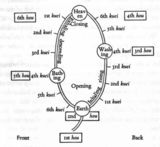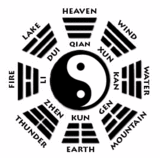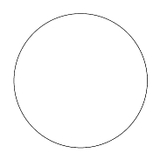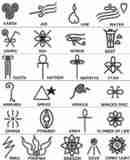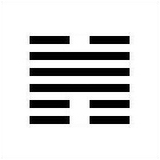What is Natural (a Chinese version)
Table of contents
No headersComing soon to a wiki near you! A commentary by Pila on a topic so esoteric and complex it is all but impossible to describe: What is Natural! With thoughts amalgamated from two venerable Chinese philosophy classics: I Ching and The Secret of the Golden Flower. Stay tuned, it will appear in episodes because no one in their right mind would read the whole thing all at once (and it hasn’t all been written yet, either.)
================================================================
Episode 1 (October 8, 2009)
Man follows Earth.
Earth follows heaven.
Heaven follows the Tao.
Tao follows what is natural.
From the Tao Te Ching
Part of verse twenty-five
(Vintage Books, 1989)
My philosophical view of what is natural is still evolving from two primary sources: (1) living with a contemplative practice based on Chinese tradition and its fairly complex details, and (2) living in a Hawaiian rainforest near a volcano. I recognize how complexity can be problematic.
Some things in nature need to be experienced to be appreciated. Those things are often quite simple but, even when simple, they sometimes just don’t have a neat place in the rational scheme of things. Some of those things can become attractive morsels for the mind, giving rise to thoughts of subtle flavor and texture.
My meditation practice in particular leads me to appreciate the details of the Chinese scheme of things as fair and accurate descriptions. Living in Hawai`i since 1985 has given me an opportunity to experience natural phenomenon with a consistency and intensity I had never seen before. There are corresponding Hawaiian contemplative traditions, and indeed some the essential ideas seem to be found in the background of almost every traditional culture. The similarities of these traditions can be remarkable, starting with the fundamental notion of complementary duality.
However, the Chinese take details further than most traditions I have seen (perhaps that is because I have consistently studied and practiced in the Chinese tradition.) So let’s jump in. You may have heard of Yin and Yang, the fundamental duality of Chinese philosophy. Hawaiians have Ku and Hina, Japanese have In and Yo, Hindus have Shiva and Shakti – dualities are a common denominator of most traditional schools of contemplation (and, indeed, fundamental in what was considered science then, in traditional healing for example.)
We will look at a ladder of yin and yang from their uppermost cosmic origin to the next lower level of archetypal imagery, then on to human nature and life at both the personal and supra-personal levels. The cast in this tale includes light, breath energy and spirit ... so stay tuned.
================================================================
- Tag page (Edit tags)
- What links here
Files 7
| File | Size | Date | Attached by | |||
|---|---|---|---|---|---|---|
| 6.jpg No description | 26.17 kB | 18:42, 21 Nov 2010 | Pila Mulligan | Actions | ||
| ba-gua.gif No description | 15.15 kB | 18:42, 21 Nov 2010 | Pila Mulligan | Actions | ||
| chien.png No description | 169 bytes | 18:43, 21 Nov 2010 | Pila Mulligan | Actions | ||
| circle.jpg No description | 5.47 kB | 18:43, 21 Nov 2010 | Pila Mulligan | Actions | ||
| egyptiansymbols.jpg No description | 17.69 kB | 18:43, 21 Nov 2010 | Pila Mulligan | Actions | ||
| gua31.jpg No description | 10.04 kB | 18:43, 21 Nov 2010 | Pila Mulligan | Actions | ||
| kun.png No description | 228 bytes | 18:43, 21 Nov 2010 | Pila Mulligan | Actions | ||

